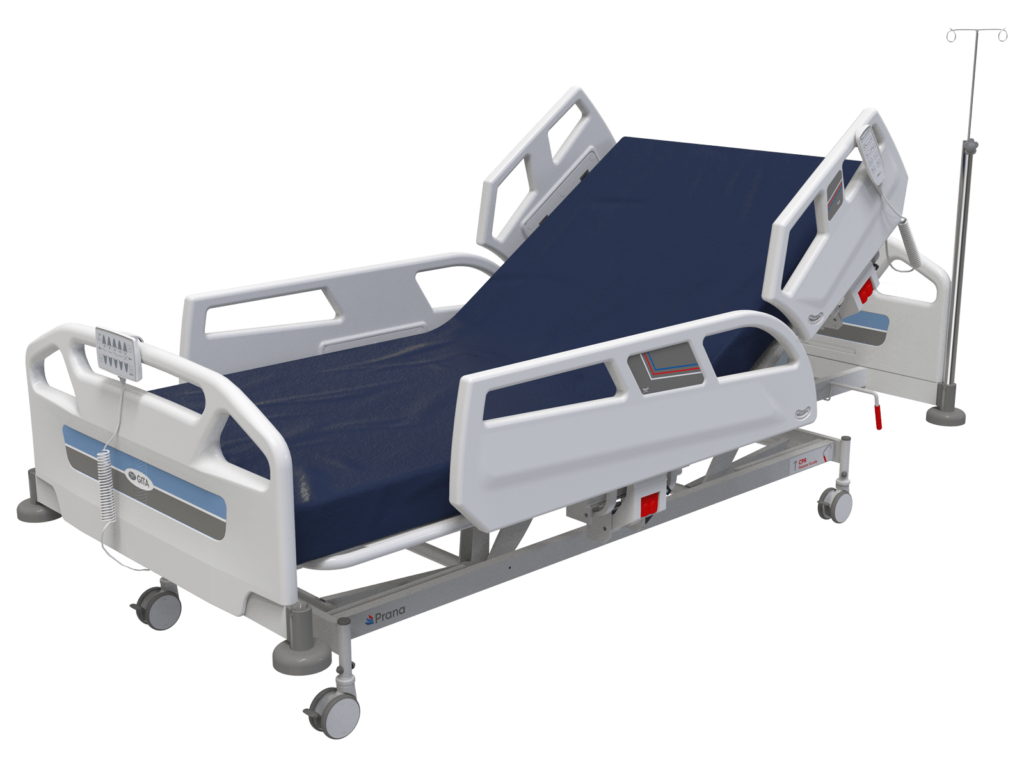
Hospital beds are made with unique features to meet the requirements of both in-hospital and at-home healthcare. Their features set them apart from standard hotel or home beds. Electronic buttons, height adjustment, and movable side rails are typical features of a ward care bed. Modern hospital beds may also have extra cutting-edge features for the ease, comfort, and well-being of patients and healthcare professionals.
Types of Hospital Beds
Fowler Bed
Hospital Fowler beds are specially made with four perforated portions that let patients lie in various positions.
- The patient can sit upright with their knees bent or straight.
- The low Fowler posture, which elevates the head slightly,
- The semi-fowler position is at an angle between 30 and 45 degrees.
- The high Fowler position, which is at a 90-degree angle
- A Fowler bed has ABS steel foot and head panels, collapsible side rails, motors, and cranks for simple adjustments.
- They use separate or central braking systems and provide knee adjustment and backrest services.
These beds are used for resting patients who are having respiratory distress, for women who need to drain their uterus after giving birth, for people who require nasal feeding tubes, and for people who can aspirate.
Recliner Bed
This ward care bed can convert a standard house bed into a practical, adjustable one.
- Their flexible frame allows them to be positioned at various angles, ranging from erect to low-lying.
- Many of these beds are small enough to fit in modern homes and come with an easy-to-use remote control.
Patients looking for relief from severe back pain and a peaceful night’s sleep will find them very helpful.
Manual Bed
Manual beds are a common and extensively utilized bed type in hospitals, nursing homes, and other care facilities.
- Hand cranks elevate the head or foot section and change the bed’s height.
- Suitable for patients who don’t need frequent position adjustments.
- They provide an affordable option for long-term treatment.
Motorized Bed
Hospital beds that can have their height altered to suit the patient’s needs are called motorized beds.
- Side railings are available with a removal option for enhanced safety.
- The bed’s adjustable head and foot support patients’ movements of sitting or standing.
- Some come with wheels that can be locked, making it easy to relocate.
Electric Bed
Electric beds apply top technologies to put patient comfort and safety as the priority.
- These beds can be raised or lowered and adjusted for height.
- It is helpful for people who have different medical conditions that make it difficult for them to sleep in unpleasant postures.
- These types of hospital ward beds have different resting positions, removable head and footboards, swivel castors, and foldable safety rails.
People with arthritis, edema, respiratory problems, restricted movement, heartburn, and acid reflux often find relief with electric beds.
Conclusion
Patients can select alternate ward care beds based on available space, needs, and financial resources. The quality of sleep is enhanced by these beds, particularly for bedridden individuals. Superior hospital bed choices, such as the Fowler bed, have garnered positive feedback from numerous customers. These hospital beds have won praise for their robustness, affordability, style, and capacity to keep patients comfortable.









